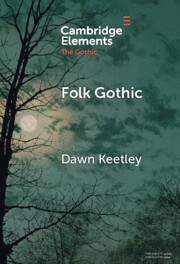Element contents
Folk Gothic
Published online by Cambridge University Press: 14 December 2023
Summary
- Type
- Element
- Information
- Series: Elements in the GothicOnline ISBN: 9781009160902Publisher: Cambridge University PressPrint publication: 01 February 2024



